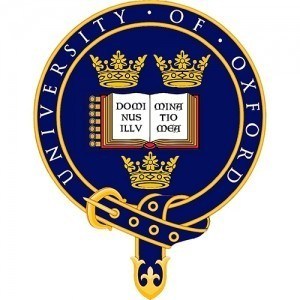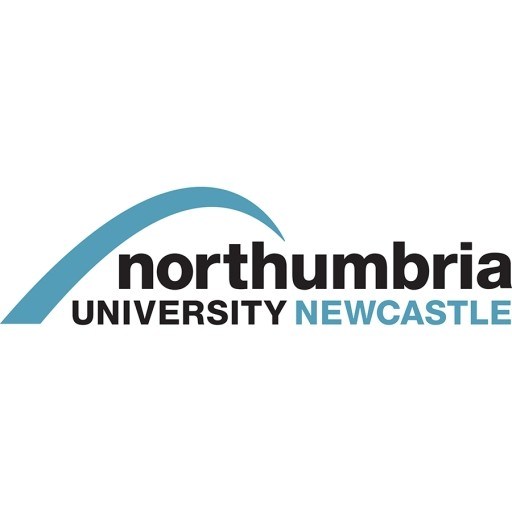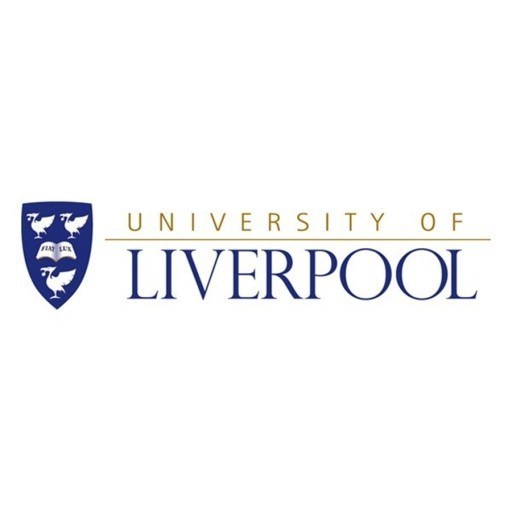Photos of university / #oxford_uni
The Master of Science in Statistical Science at the University of Oxford offers a comprehensive and rigorous training in modern statistical methods and their applications across diverse fields. Designed for students with a strong quantitative background, this programme equips attendees with the theoretical foundations, computational skills, and practical experience necessary to excel in data analysis, research, and decision-making in academia, industry, and public sector roles. Throughout the course, students engage with cutting-edge topics such as Bayesian statistics, statistical inference, machine learning, data visualization, and complex modelling techniques. The curriculum combines core modules in probability theory, statistical methodology, and programming with specialized options tailored to individual research interests and career goals.
Students benefit from the university’s world-renowned faculty, state-of-the-art facilities, and an intellectually stimulating environment that encourages critical thinking and innovation. The programme emphasizes both theoretical understanding and practical application, often involving real-world data sets and collaborative projects with industry partners. As part of the academic experience, students develop proficiency in programming languages such as R and Python, and acquire skills in data management, statistical computing, and experimental design. The university also offers opportunities for internships, seminars, and workshops that enhance professional development and networking.
Graduates of the MSc in Statistical Science are well-prepared for careers in data science, analytics, research institutions, and consultancy firms. Many pursue further doctoral studies or join leading organizations in finance, healthcare, technology, government agencies, and academic research. The programme’s rigorous standards and comprehensive curriculum ensure that students graduate with a versatile and highly valued skill set aligned with the rapidly evolving landscape of data-driven decision making. With access to Oxford’s vibrant academic community and extensive resources, students are equipped to make impactful contributions to science, policy, and business through advanced statistical expertise.
The programme provides structured training and research experience in the first year, followed by a three-year research project leading to a DPhil. It is the Oxford component of OxWaSP (the Oxford Warwick Statistics Programme), an EPSRC and MRC Centre for Doctoral Training in Next-Generational Statistical Science.
In the first year you will receive training for research in five key areas:
Statistical inference in complex models
The new demands of scientific research and the availability of vast data sets have required statisticians to revisit and reformulate the foundations of their discipline so that theory and methods become scalable to modern data.
Multivariate stochastic processes
A substantial number of inferential environments evolve dynamically in time or space, or both, often under stochastic control. A wide range of applied probabilistic and statistical methods are currently being developed to address these needs.
Bayesian analyses for complex structural information
The recent surge in Bayesian methodologies merges the now well-understood tools of probabilistic reasoning with stochastic computational and statistical inference. Current research frontiers further develop this relationship to apply to an ever increasing domain of application where essential contextual structural information can be properly coded as part of an extensive data-analysis exercise.
Machine learning and probabilistic graphical models
Over recent decades a mutual understanding of the rich symbioses between statistics and machine learning methodologies has developed and researchers have now begun to exploit these relationships. One of the key areas of such exchange is in probabilistic graphical modelling.
Stochastic computation for intractable inference
Many recent advances in statistical modelling have only been made possible by the dramatic progress in techniques which admit the fast analysis of probabilistic and statistical models. These methods are being increasingly customized to the needs of different model classes.
Pattern of teaching, learning and supervision
The first two terms consist of a series of two-week modules. Modules start with two days of lectures. Over the subsequent five days you read some of the original literature and write a report. Industrial and academic speakers visit Oxford for informal lunch sessions mid-module, and you will have the opportunity to invite speakers.
At the end of each module you travel to Warwick for a mini-symposium on the theme of the module. The rest of the first year consists of two ten-week research projects. Towards the end of the first year you choose a supervisor for your main DPhil project in Oxford and carry out this research in years two to four. There will be formal assessments of your progress at around 18 and 36 months into the degree. These assessments involve the submission of written work and oral examination.
The final thesis is normally submitted for examination during the fourth year and is followed by the viva examination.
Where appropriate for the research, student projects will be run jointly with the department’s leading industrial partners and you will have the chance to undertake a placement in data-intensive statistics with some of the strongest statistics groups in the USA, Europe and Asia.
Applicants are normally expected to be predicted or have achieved a first-class or strong upper second-class undergraduate degree with honours (or equivalent international qualifications), as a minimum, in an appropriate subject. You will need a good background in relevant aspects of mathematics and statistics. Success in a degree with a high content of machine learning or a mathematical science (such as physics) may be acceptable.
For applicants with a degree from the USA, the minimum GPA sought is 3.6 out of 4.0.
However, entrance is very competitive and most successful applicants have a high first-class degree of the equivalent.
If you hold non-UK qualifications and wish to check how your qualifications match these requirements, you can contact the National Recognition Information Centre for the United Kingdom (UK NARIC).
No Graduate Record Examination (GRE) or GMAT scores are sought.
- Official transcript(s)
- CV/résumé
- Statement of purpose/personal statement:Up to two pages
- References/letters of recommendation:Three overall, generally academic
ENGLISH LANGUAGE REQUIREMENTS
Higher level
|
Test |
Standard level scores |
Higher level scores |
||
|
IELTS Academic |
7.0 | Minimum 6.5 per component | 7.5 | Minimum 7.0 per component |
|
TOEFL iBT |
100 |
Minimum component scores:
|
110 |
Minimum component scores:
|
| Cambridge Certificate of Proficiency in English (CPE) | 185 |
Minimum 176 per component |
191 |
Minimum 185 per component |
| Cambridge Certificate of Advanced English (CAE) | 185 |
Minimum 176 per component |
191 |
Minimum 185 per component |
The University of Oxford offers various funding options for students enrolled in the Statistical Science program, aiming to support excellence in research and education. Prospective students are encouraged to explore a wide range of scholarships, studentships, and financial aid schemes available through the university and external organizations. The university provides scholarships based on academic merit, which are highly competitive and often cover full or partial tuition fees, along with living expenses. Notable examples include the Clarendon Fund, which offers numerous scholarships to both UK and international students across all disciplines, including statistical sciences. Additionally, there are departmental bursaries and grants designed specifically for students pursuing postgraduate studies in statistical science, providing financial support throughout the duration of the program. Students are also encouraged to seek funding from external sources such as government-sponsored scholarships, private foundations, and research councils. For example, UK students may be eligible for funding from schemes like the UK Research and Innovation (UKRI) or the Economic and Social Research Council (ESRC). International students are advised to look into scholarships provided by their home governments or international organizations. The university also offers tailored financial advice and support through its dedicated student finance office, which assists applicants in understanding the application process, eligibility criteria, and the application deadlines for various funding opportunities. Moreover, students can apply for research grants and assistantships that support their academic and research activities, often providing a stipend as well as tuition fee coverage. The cost of attendance varies depending on the student's residency status, lifestyle choices, and specific program requirements, but the university ensures transparency in fee structure and expected living expenses. To maximize their chances of obtaining financial aid, students should carefully review the specific eligibility requirements and prepare complete applications by relevant deadlines. Overall, the university’s comprehensive approach to student financing reflects its commitment to attracting talented individuals from around the world, ensuring that financial constraints do not hinder access to high-quality statistical education and research opportunities.
The MPhil in Statistical Science at the University of Oxford is a highly regarded postgraduate program designed to provide students with a comprehensive understanding of modern statistical techniques and their applications. This program is ideal for students who wish to develop strong theoretical foundations alongside practical skills in statistical modeling, data analysis, and computational methods. The course curriculum covers a broad range of topics, including probability theory, statistical inference, regression analysis, Bayesian methods, machine learning, and biostatistics. Students are encouraged to engage with real-world data sets through projects and research, fostering an applied understanding of statistical principles.
The program typically lasts for one year full-time and is suitable for those intending to pursue research careers or further study at the doctoral level. The faculty comprises leading statisticians and data scientists who are actively involved in cutting-edge research, offering students opportunities to collaborate on various projects. Entrance requirements generally include a strong academic background in mathematics or related disciplines, with proven analytical skills and numerical proficiency.
Students enrolled in the program benefit from access to Oxford’s extensive research facilities and resources, including seminars, workshops, and computing labs. The university's environment promotes interdisciplinary collaboration, allowing students to apply statistical techniques across fields such as medicine, finance, engineering, and social sciences. Graduates of the program are well-equipped to work in academic research, industry, government agencies, or continue with PhD studies.
The application process is competitive, requiring submission of academic transcripts, references, and a statement of purpose outlining career goals and research interests. Admission decisions are based on academic excellence, motivation, and potential for contribution to the field. The MPhil in Statistical Science at Oxford is recognized globally for its rigorous approach and high academic standards, making it a valuable stepping stone for careers in academia or data-driven industries.



